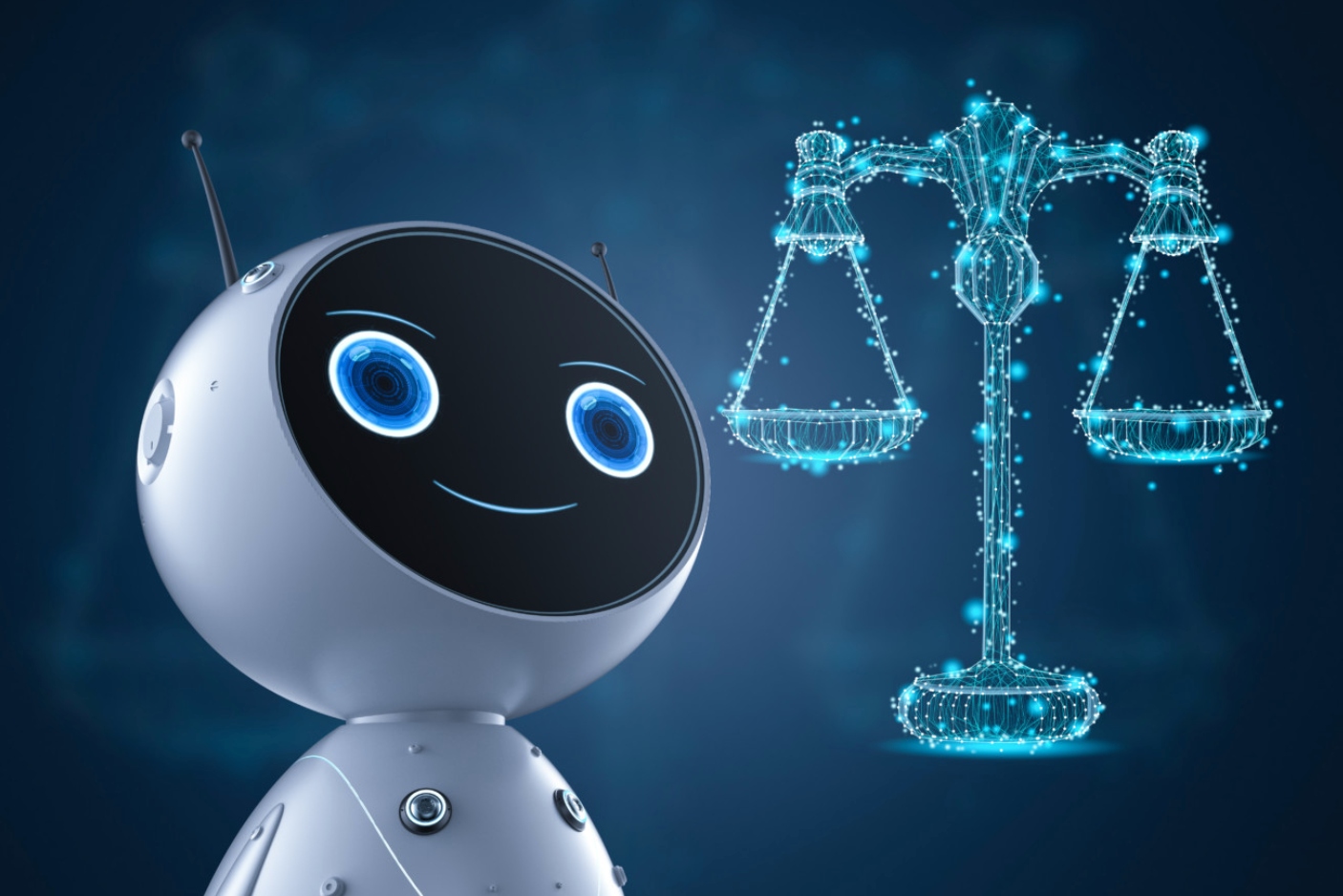TECHNOLOGY
State of AI and Ethical Issues

How to Regulate Artificial Intelligence the Right Way: State of AI and Ethical Issues
The current artificial intelligence (AI) systems are regulated by other existing regulations such as data protection, consumer protection and market competition laws.
It is critical for governments, leaders, and decision makers to develop a firm understanding of the fundamental differences between artificial intelligence, machine learning, and deep learning.
Artificial intelligence (AI) applies to computing systems designed to perform tasks usually reserved for human intelligence using logic, if-then rules, and decision trees. AI recognizes patterns from vast amounts of quality data providing insights, predicting outcomes, and making complex decisions.
Machine learning (ML) is a subset of AI that utilises advanced statistical techniques to enable computing systems to improve at tasks with experience over time. Chatbots like Amazon’s Alexa and Apple’s Siri improve every year thanks to constant use by consumers coupled with the machine learning that takes place in the background.
Deep learning (DL) is a subset of machine learning that uses advanced algorithms to enable an AI system to train itself to perform tasks by exposing multilayered neural networks to vast amounts of data. It then uses what it learns to recognize new patterns contained in the data. Learning can be human-supervised learning, unsupervised learning, and/or reinforcement learning, like Google used with DeepMind to learn how to beat humans at the game Go.
State of Artificial Intelligence in the Pandemic Era

Artificial intelligence (AI) is stepping up in more concrete ways in blockchain, education, internet of things, quantum computing, arm race and vaccine development.
During the Covid-19 pandemic, we have seen AI become increasingly pivotal to breakthroughs in everything from drug discovery to mission critical infrastructure like electricity grids.
AI-first approaches have taken biology by storm with faster simulations of humans’ cellular machinery (proteins and RNA). This has the potential to transform drug discovery and healthcare.
Transformers have emerged as a general purpose architecture for machine learning, beating the state of the art in many domains including natural language planning (NLP), computer vision, and even protein structure prediction.
AI is now an actual arms race rather than a figurative one.
Organizations must learn from the mistakes made with the internet, and prepare for a safer AI.
Artificial intelligence deals with the area of developing computing systems which are capable of performing tasks that humans are very good at, for example recognising objects, recognising and making sense of speech, and decision making in a constrained environment.
There are 3 stages of artificial intelligence:

1. Artificial Narrow Intelligence (ANI), which has a limited range of capabilities. As an example: AlphaGo, IBM’s Watson, virtual assistants like Siri, disease mapping and prediction tools, self-driving cars, machine learning models like recommendation systems and deep learning translation.
2. Artificial General Intelligence (AGI), which has attributes that are on par with human capabilities. This level hasn’t been achieved yet.
3. Artificial Super Intelligence (ASI), which has skills that surpass humans and can make them obsolete. This level hasn’t been achieved yet.
Why Governments Need to Regulate Artificial Intelligence?

We need to regulate artificial intelligence for two reasons.
-
First, because governments and companies use AI to make decisions that can have a significant impact on our lives. For example, algorithms that calculate school performance can have a devastating effect.
-
Second, because whenever someone takes a decision that affects us, they have to be accountable to us. Human rights law sets out minimum standards of treatment that everyone can expect. It gives everyone the right to a remedy where those standards are not met, and you suffer harm.
Is There An International Artificial Intelligence Law?

As of today, there is no international artificial intelligence law nor specific legislation designed to regulate its use. However, progress has been made as bills have been passed to regulate certain specific AI systems and frameworks.
Artificial intelligence has changed rapidly over the last few decades. It has made our lives so much easier and saves us valuable time to complete other tasks.
AI must be regulated to protect the positive progress of the technology. Legislators across the globe have to this day failed to design laws that specifically regulate the use of artificial intelligence. This allows profit-oriented companies to develop systems that may cause harm to individuals and to the broader society.
National and International Artificial Intelligence Regulations

National and local governments have started adopting strategies and working on new laws for a number of years, but no legislation has been passed yet.
China for example has developed in 2017 a strategy to become the world’s leader in AI in 2030. In the US, the White House issued ten principles for the regulation of AI. They include the promotion of “reliable, robust and trustworthy AI applications”, public participation and scientific integrity. International bodies that give advice to governments, such as the OECD or the World Economic Forum, have developed ethical guidelines.

The Council of Europe created a Committee dedicated to help develop a legal framework on AI. The most ambitious proposal yet comes from the EU. On 21 April 2021, the EU Commission put forward a proposal for a new AI Act.
Ethical Concerns of Artificial Intelligence

Police forces across the EU deploy facial recognition technologies and predictive policing systems. These systems are inevitably biased and thus perpetuate discrimination and inequality.
Crime prediction and recidivism risk are a second AI application fraught with legal problems. A ProPublica investigation into an algorithm-based criminal risk assessment tool found the formula more likely to flag black defendants as future criminals, labelling them at twice the rate as white defendants, and white defendants were mislabeled as low-risk more often than black defendants. We need to think about the way we are mass producing decisions and processing people, particularly low income and low-status individuals, through automation and their consequences for society.
How to Regulate Artificial Intelligence the Right Way

An effective, rights-protecting AI regulation must, at a minimum, contain the following safeguards. First, artificial intelligence regulation must prohibit use cases, which violate fundamental rights, such as biometric mass surveillance or predictive policing systems. The prohibition should not contain exceptions that allow corporations or public authorities to use them “under certain conditions”.
Second, there must be clear rules setting out exactly what organizations have to make public about their products and services. Companies must provide a detailed description of the AI system itself. This includes information on the data it uses, the development process, the systems’ purpose and where and by whom it is used. It is also key that individuals exposed to AI are informed about it, for example in the case of hiring algorithms. Systems that can have a significant impact on people’s lives should face extra scrutiny and feature in a publicly accessible database. This would make it easier for researchers and journalists to make sure companies and governments are protecting our freedoms properly.
Third, individuals and organisations protecting consumers need to be able to hold governments and corporations responsible when there are problems. Existing rules on accountability must be adapted to recognise that decisions are made by an algorithm and not by the user. This could mean putting the company that developed the algorithm under an obligation to check the data with which algorithms are trained and the decisions algorithms make so they can correct problems.
Fourth, new regulations must make sure that there is a regulator that can make companies and the authorities accountable and that they are following the rules properly. This watchdog should be independent and have the resources and powers it needs to do its job.
Finally, AI regulation should also contain safeguards to protect the most vulnerable. It should set up a system that allows people who have been harmed by AI systems to make a complaint and get compensation. Workers should have the right to take action against invasive AI systems used by their employer without fear of retaliation.
Conclusion

A trustworthy artificial intelligence should respect all applicable laws and regulations, as well as a series of requirements; specific assessment lists aim to help verify the application of each of the key requirements:
-
Human agency and oversight: AI systems should enable equitable societies by supporting human agency and fundamental rights, and not decrease, limit or misguide human autonomy.
-
Robustness and safety: Trustworthy AI requires algorithms to be secure, reliable and robust enough to deal with errors or inconsistencies during all life cycle phases of AI systems.
-
Privacy and data governance: Citizens should have full control over their own data, while data concerning them will not be used to harm or discriminate against them.
-
Transparency: The traceability of AI systems should be ensured.
-
Diversity, non-discrimination and fairness: AI systems should consider the whole range of human abilities, skills and requirements, and ensure accessibility.
-
Societal and environmental well-being: AI systems should be used to enhance positive social change and enhance sustainability and ecological responsibility.
-
Accountability: Mechanisms should be put in place to ensure responsibility and accountability for AI systems and their outcomes.
Source link
TECHNOLOGY
Next-gen chips, Amazon Q, and speedy S3

AWS re:Invent, which has been taking place from November 27 and runs to December 1, has had its usual plethora of announcements: a total of 21 at time of print.
Perhaps not surprisingly, given the huge potential impact of generative AI – ChatGPT officially turns one year old today – a lot of focus has been on the AI side for AWS’ announcements, including a major partnership inked with NVIDIA across infrastructure, software, and services.
Yet there has been plenty more announced at the Las Vegas jamboree besides. Here, CloudTech rounds up the best of the rest:
Next-generation chips
This was the other major AI-focused announcement at re:Invent: the launch of two new chips, AWS Graviton4 and AWS Trainium2, for training and running AI and machine learning (ML) models, among other customer workloads. Graviton4 shapes up against its predecessor with 30% better compute performance, 50% more cores and 75% more memory bandwidth, while Trainium2 delivers up to four times faster training than before and will be able to be deployed in EC2 UltraClusters of up to 100,000 chips.
The EC2 UltraClusters are designed to ‘deliver the highest performance, most energy efficient AI model training infrastructure in the cloud’, as AWS puts it. With it, customers will be able to train large language models in ‘a fraction of the time’, as well as double energy efficiency.
As ever, AWS offers customers who are already utilising these tools. Databricks, Epic and SAP are among the companies cited as using the new AWS-designed chips.
Zero-ETL integrations
AWS announced new Amazon Aurora PostgreSQL, Amazon DynamoDB, and Amazon Relational Database Services (Amazon RDS) for MySQL integrations with Amazon Redshift, AWS’ cloud data warehouse. The zero-ETL integrations – eliminating the need to build ETL (extract, transform, load) data pipelines – make it easier to connect and analyse transactional data across various relational and non-relational databases in Amazon Redshift.
A simple example of how zero-ETL functions can be seen is in a hypothetical company which stores transactional data – time of transaction, items bought, where the transaction occurred – in a relational database, but use another analytics tool to analyse data in a non-relational database. To connect it all up, companies would previously have to construct ETL data pipelines which are a time and money sink.
The latest integrations “build on AWS’s zero-ETL foundation… so customers can quickly and easily connect all of their data, no matter where it lives,” the company said.
Amazon S3 Express One Zone
AWS announced the general availability of Amazon S3 Express One Zone, a new storage class purpose-built for customers’ most frequently-accessed data. Data access speed is up to 10 times faster and request costs up to 50% lower than standard S3. Companies can also opt to collocate their Amazon S3 Express One Zone data in the same availability zone as their compute resources.
Companies and partners who are using Amazon S3 Express One Zone include ChaosSearch, Cloudera, and Pinterest.
Amazon Q
A new product, and an interesting pivot, again with generative AI at its core. Amazon Q was announced as a ‘new type of generative AI-powered assistant’ which can be tailored to a customer’s business. “Customers can get fast, relevant answers to pressing questions, generate content, and take actions – all informed by a customer’s information repositories, code, and enterprise systems,” AWS added. The service also can assist companies building on AWS, as well as companies using AWS applications for business intelligence, contact centres, and supply chain management.
Customers cited as early adopters include Accenture, BMW and Wunderkind.
Want to learn more about cybersecurity and the cloud from industry leaders? Check out Cyber Security & Cloud Expo taking place in Amsterdam, California, and London. Explore other upcoming enterprise technology events and webinars powered by TechForge here.
TECHNOLOGY
HCLTech and Cisco create collaborative hybrid workplaces

Digital comms specialist Cisco and global tech firm HCLTech have teamed up to launch Meeting-Rooms-as-a-Service (MRaaS).
Available on a subscription model, this solution modernises legacy meeting rooms and enables users to join meetings from any meeting solution provider using Webex devices.
The MRaaS solution helps enterprises simplify the design, implementation and maintenance of integrated meeting rooms, enabling seamless collaboration for their globally distributed hybrid workforces.
Rakshit Ghura, senior VP and Global head of digital workplace services, HCLTech, said: “MRaaS combines our consulting and managed services expertise with Cisco’s proficiency in Webex devices to change the way employees conceptualise, organise and interact in a collaborative environment for a modern hybrid work model.
“The common vision of our partnership is to elevate the collaboration experience at work and drive productivity through modern meeting rooms.”
Alexandra Zagury, VP of partner managed and as-a-Service Sales at Cisco, said: “Our partnership with HCLTech helps our clients transform their offices through cost-effective managed services that support the ongoing evolution of workspaces.
“As we reimagine the modern office, we are making it easier to support collaboration and productivity among workers, whether they are in the office or elsewhere.”
Cisco’s Webex collaboration devices harness the power of artificial intelligence to offer intuitive, seamless collaboration experiences, enabling meeting rooms with smart features such as meeting zones, intelligent people framing, optimised attendee audio and background noise removal, among others.
Want to learn more about cybersecurity and the cloud from industry leaders? Check out Cyber Security & Cloud Expo taking place in Amsterdam, California, and London. Explore other upcoming enterprise technology events and webinars powered by TechForge here.
TECHNOLOGY
Canonical releases low-touch private cloud MicroCloud

Canonical has announced the general availability of MicroCloud, a low-touch, open source cloud solution. MicroCloud is part of Canonical’s growing cloud infrastructure portfolio.
It is purpose-built for scalable clusters and edge deployments for all types of enterprises. It is designed with simplicity, security and automation in mind, minimising the time and effort to both deploy and maintain it. Conveniently, enterprise support for MicroCloud is offered as part of Canonical’s Ubuntu Pro subscription, with several support tiers available, and priced per node.
MicroClouds are optimised for repeatable and reliable remote deployments. A single command initiates the orchestration and clustering of various components with minimal involvement by the user, resulting in a fully functional cloud within minutes. This simplified deployment process significantly reduces the barrier to entry, putting a production-grade cloud at everyone’s fingertips.
Juan Manuel Ventura, head of architectures & technologies at Spindox, said: “Cloud computing is not only about technology, it’s the beating heart of any modern industrial transformation, driving agility and innovation. Our mission is to provide our customers with the most effective ways to innovate and bring value; having a complexity-free cloud infrastructure is one important piece of that puzzle. With MicroCloud, the focus shifts away from struggling with cloud operations to solving real business challenges” says
In addition to seamless deployment, MicroCloud prioritises security and ease of maintenance. All MicroCloud components are built with strict confinement for increased security, with over-the-air transactional updates that preserve data and roll back on errors automatically. Upgrades to newer versions are handled automatically and without downtime, with the mechanisms to hold or schedule them as needed.
With this approach, MicroCloud caters to both on-premise clouds but also edge deployments at remote locations, allowing organisations to use the same infrastructure primitives and services wherever they are needed. It is suitable for business-in-branch office locations or industrial use inside a factory, as well as distributed locations where the focus is on replicability and unattended operations.
Cedric Gegout, VP of product at Canonical, said: “As data becomes more distributed, the infrastructure has to follow. Cloud computing is now distributed, spanning across data centres, far and near edge computing appliances. MicroCloud is our answer to that.
“By packaging known infrastructure primitives in a portable and unattended way, we are delivering a simpler, more prescriptive cloud experience that makes zero-ops a reality for many Industries.“
MicroCloud’s lightweight architecture makes it usable on both commodity and high-end hardware, with several ways to further reduce its footprint depending on your workload needs. In addition to the standard Ubuntu Server or Desktop, MicroClouds can be run on Ubuntu Core – a lightweight OS optimised for the edge. With Ubuntu Core, MicroClouds are a perfect solution for far-edge locations with limited computing capabilities. Users can choose to run their workloads using Kubernetes or via system containers. System containers based on LXD behave similarly to traditional VMs but consume fewer resources while providing bare-metal performance.
Coupled with Canonical’s Ubuntu Pro + Support subscription, MicroCloud users can benefit from an enterprise-grade open source cloud solution that is fully supported and with better economics. An Ubuntu Pro subscription offers security maintenance for the broadest collection of open-source software available from a single vendor today. It covers over 30k packages with a consistent security maintenance commitment, and additional features such as kernel livepatch, systems management at scale, certified compliance and hardening profiles enabling easy adoption for enterprises. With per-node pricing and no hidden fees, customers can rest assured that their environment is secure and supported without the expensive price tag typically associated with cloud solutions.
Want to learn more about cybersecurity and the cloud from industry leaders? Check out Cyber Security & Cloud Expo taking place in Amsterdam, California, and London. Explore other upcoming enterprise technology events and webinars powered by TechForge here.
-

 MARKETING6 days ago
MARKETING6 days agoRoundel Media Studio: What to Expect From Target’s New Self-Service Platform
-

 SEO6 days ago
SEO6 days agoGoogle Limits News Links In California Over Proposed ‘Link Tax’ Law
-
SEARCHENGINES6 days ago
Daily Search Forum Recap: April 12, 2024
-

 SEO5 days ago
SEO5 days ago10 Paid Search & PPC Planning Best Practices
-

 SEARCHENGINES5 days ago
SEARCHENGINES5 days agoGoogle Core Update Volatility, Helpful Content Update Gone, Dangerous Google Search Results & Google Ads Confusion
-

 SEO7 days ago
SEO7 days agoGoogle Unplugs “Notes on Search” Experiment
-

 MARKETING5 days ago
MARKETING5 days ago2 Ways to Take Back the Power in Your Business: Part 2
-

 PPC6 days ago
PPC6 days agoCritical Display Error in Brand Safety Metrics On Twitter/X Corrected



![The Current State of Google's Search Generative Experience [What It Means for SEO in 2024] The Current State of Google's Search Generative Experience [What It Means for SEO in 2024]](https://articles.entireweb.com/wp-content/uploads/2024/02/The-Current-State-of-Googles-Search-Generative-Experience-What-It-400x240.jpg)
![The Current State of Google's Search Generative Experience [What It Means for SEO in 2024] The Current State of Google's Search Generative Experience [What It Means for SEO in 2024]](https://articles.entireweb.com/wp-content/uploads/2024/02/The-Current-State-of-Googles-Search-Generative-Experience-What-It-80x80.jpg)










You must be logged in to post a comment Login